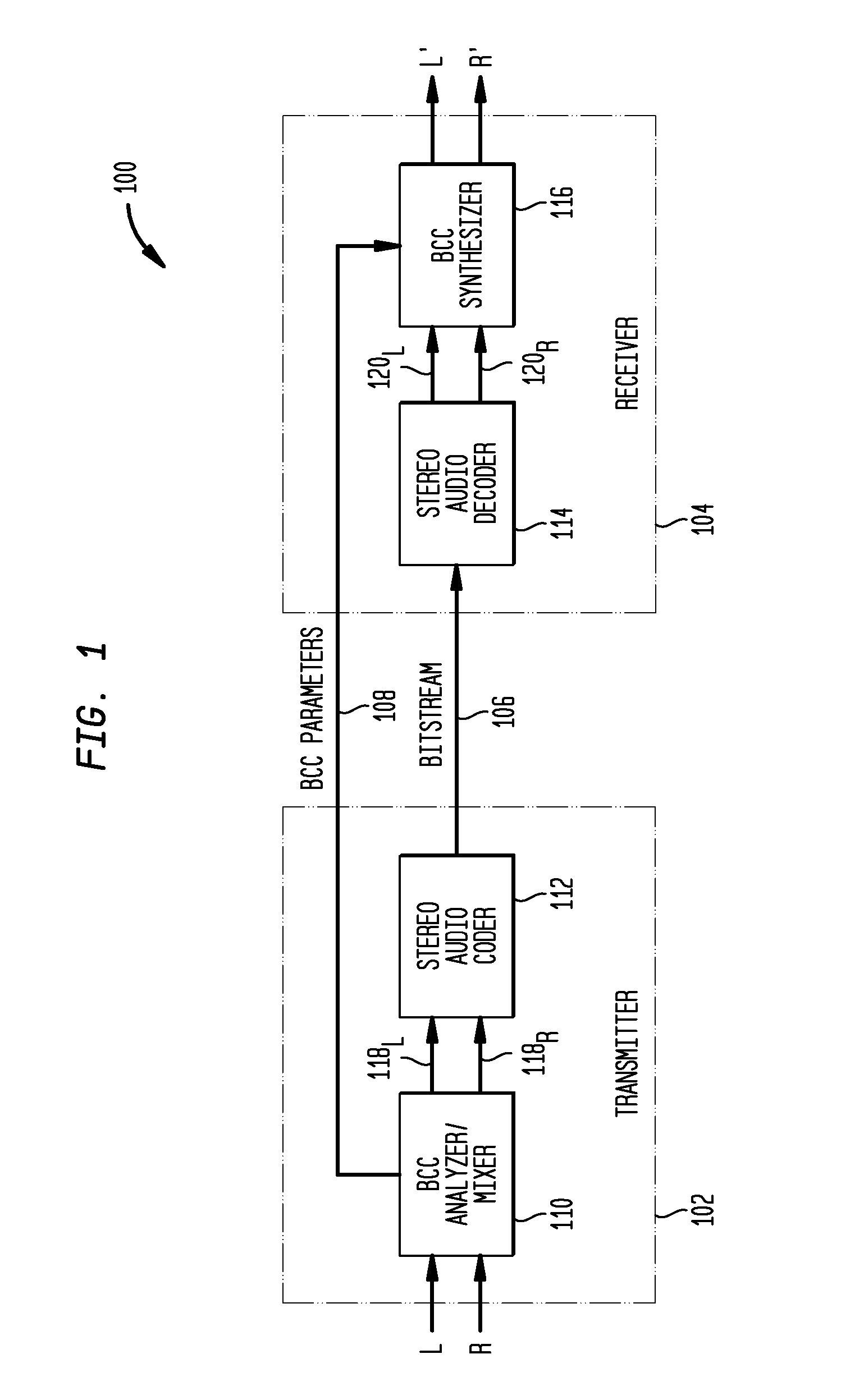Hybrid multi-channel/cue coding/decoding of audio signals
a multi-channel, audio signal technology, applied in the field of encoding of audio signals, can solve the problems of prohibitively large amount of data required for the corresponding encoded audio bitstream for some applications involving limited storage space and/or transmission bandwidth, and achieve the effect of reducing the total amount of encoded data and high fidelity playback
- Summary
- Abstract
- Description
- Claims
- Application Information
AI Technical Summary
Benefits of technology
Problems solved by technology
Method used
Image
Examples
Embodiment Construction
[0025]FIG. 1 shows a block diagram of a hybrid audio system 100, according to one embodiment of the present invention. Audio system 100 comprises transmitter 102 and receiver 104. Transmitter 102 receives the left (L) and right (R) channels of an input stereo audio signal and generates an encoded audio bitstream 106 and a corresponding stream 108 of BCC parameters, which, depending on the implementation, may or may not be explicitly encoded into bitstream 106. FIG. 1 shows BCC parameter stream 108 being transmitted out-of-band from transmitter 102 to receiver 104. In either case, receiver 104 receives the data generated by transmitter 102, decodes encoded audio bitstream 106, and applies the BCC parameters in stream 108 to generate the left (L′) and right (R′) channels of a decoded stereo audio signal.
[0026] More particularly, transmitter 102 comprises BCC analyzer / mixer 110 and stereo audio coder 112, while receiver 104 comprises stereo audio decoder 114 and BCC synthesizer 116.
[...
PUM
 Login to View More
Login to View More Abstract
Description
Claims
Application Information
 Login to View More
Login to View More - R&D
- Intellectual Property
- Life Sciences
- Materials
- Tech Scout
- Unparalleled Data Quality
- Higher Quality Content
- 60% Fewer Hallucinations
Browse by: Latest US Patents, China's latest patents, Technical Efficacy Thesaurus, Application Domain, Technology Topic, Popular Technical Reports.
© 2025 PatSnap. All rights reserved.Legal|Privacy policy|Modern Slavery Act Transparency Statement|Sitemap|About US| Contact US: help@patsnap.com



